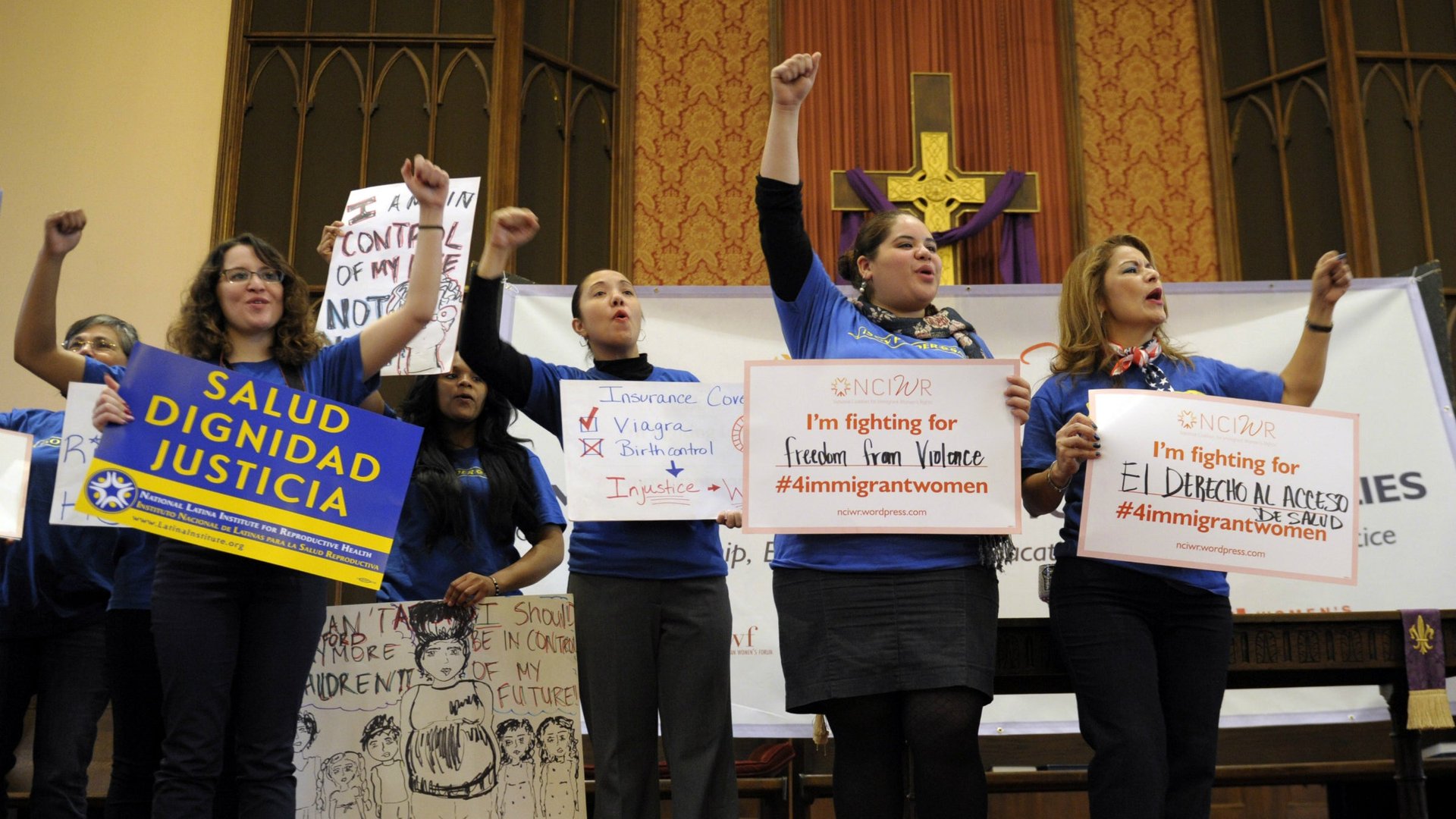A female engineer told Congress today that H-1B visas are sexist and should be replaced with green cards
Today, the Senate Judiciary Committee discussed immigration reform and its effect on women and families. Quartz is republishing an edited excerpt of the testimony of Karen Panetta, an electrical engineering professor at Tufts University.


Today, the Senate Judiciary Committee discussed immigration reform and its effect on women and families. Quartz is republishing an edited excerpt of the testimony of Karen Panetta, an electrical engineering professor at Tufts University.
I represent IEEE-USA, the 206,000 members of the Institute of Electrical and Electronics Engineers in the United States. We are a professional society, the largest organization of technologists in the world, founded by Alexander Graham Bell, who was an immigrant, and Thomas Edison, who was not. That global perspective has always been a part of the IEEE-USA.
We know innovation comes from a diversity of talents, and we seek the world’s brightest individuals to work with—as equals.
IEEE knows that one of the world’s most valuable resources that has been underutilized is women. That is why IEEE created the Women in Engineering Program, and why I started the “Nerd Girls” program.
So today’s subject is critical.
On behalf of the largest representative of America’s high tech workers, let me get right to the point: if we truly want to help women and families, do not increase the H-1B visa program. Increase STEM [science technology engineering math] green cards instead.
As an engineer, I use data to identify how things break so we can prevent catastrophic failures. I am here today to tell you that the H1-B Visa Program is a place where our immigration system is broken.
Who wants to double the number of outsourcing visas for companies who take American jobs, give them to temporary foreign workers, and then ship those jobs overseas? Yet that is what some in the Senate have proposed doing through the I-Squared bill.
The IEEE-USA view is simple: we favor green cards, not guest worker visas.
The greatest damage clearly results from offshore outsourcing. The official data from the Department of Homeland Security shows that all of the top 10 users of the H-1B program, and 15 of the top 20, are outsourcing companies.
For all the talk about H-1Bs helping to create American jobs, the facts show something else.
Look at Nielsen in Florida, Pfizer in Connecticut, the gaming industry in Nevada, just to name a few well-documented cases where American jobs were replaced by outsourcing.
Employers will argue that it takes too long to get a green card. Absolutely correct—but it is not an argument for the H-1B. It is an argument for enabling employers to get green cards for workers when they are hired.
We strongly endorse Microsoft’s recent proposal to pay a total of $25,000 in fees to take foreign STEM graduates from their student visa to a green card. No need for an H-1B.
It’s a principle: if an employer is willing to pay a substantial fee for a worker who supposedly possesses skills that the employer can’t find in American applicants, then the company should be eager to sponsor that worker for a green card immediately. This would be solid proof that the employer actually needs that person’s skills.
But we are talking about the impact of comprehensive immigration reform on women and children.
The contrasting treatment of families in the H-1B program compared to green cards actually mocks our values.
Most of the 220,000 nuclear family backlog counted by the State Department are spouses and children of employment-based permanent immigrants, separated because they received their green cards and then got married.
As software consultant Matt Arivalan testified to the House Judiciary Committee last week. He said:
I was shocked to find that because I had made a commitment to America, my wife must wait in another country for years. If I was just a temporary worker, my wife would not be 12,000 miles away.
Finally, let me warn the Committee about the obstacles which the H-1B creates for American women in STEM fields.
It is hard to get promoted when you don’t get hired in the first place. The existence of this preferred pipeline for new hires has a hugely discouraging effect on independent American women considering STEM fields.
Why? Because my own experience tells me that the vast majority of H-1B workers are men and this does not make for a diverse workforce or work environment.
IEEE-USA represents more American high tech workers than anybody else. One member from inside the industry, looking at the offshoring companies that dominate the H-1B program, tells us that global hiring is 70% [men]. But in the US, where outsourcing companies get more than half the capped H-1B visas, the ratio is more like 85% men. Shouldn’t this raise a red flag?
But as an engineer, I don’t like making decisions without hard data. IEEE-USA has been trying for months to get the actual data from DHS. It’s a simple question: how many women get H-1B visas?
So we urge this Committee to include this data in their investigation to better understand the effect the legislation will have on women and families.
More green cards for advanced STEM students–men and women–is the way to go, as IEEE USA and so many others have urged.
Green cards do not create a disincentive to hire Americans–including American women—the way the H-1B does. That’s because a green card means the new American is treated as an equal.
Isn’t that what our immigration system is supposed to do, help our economy and new families?